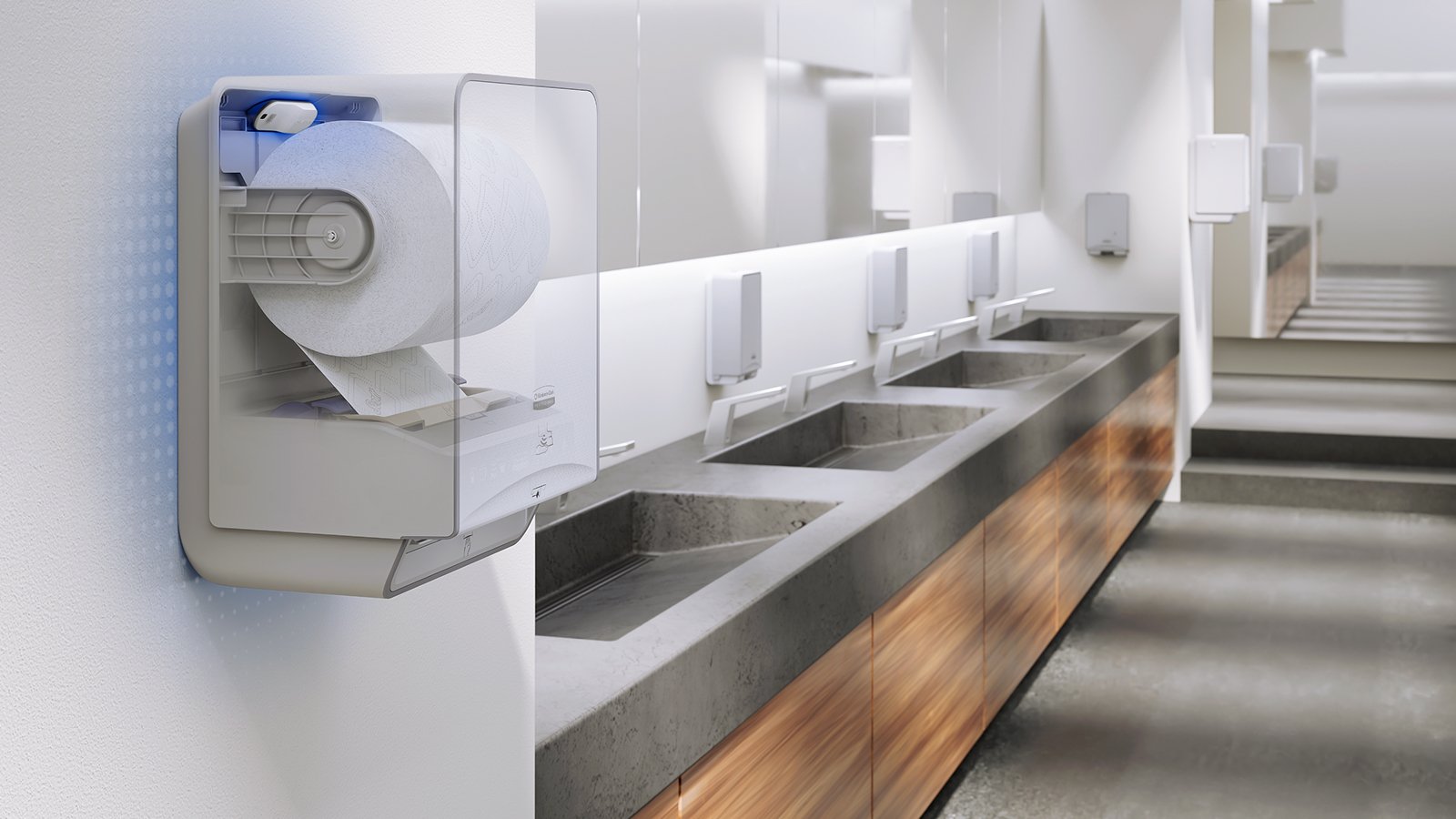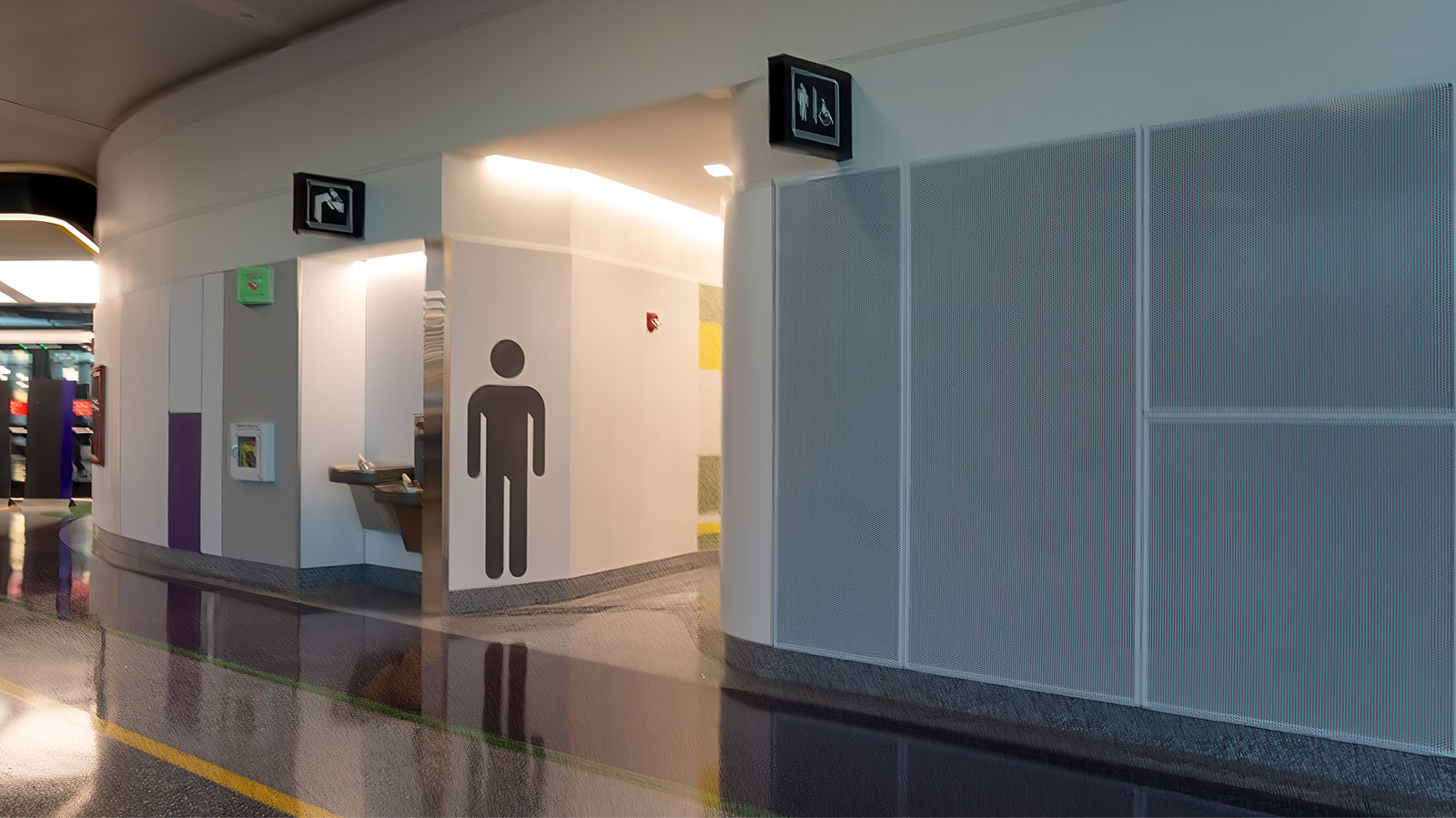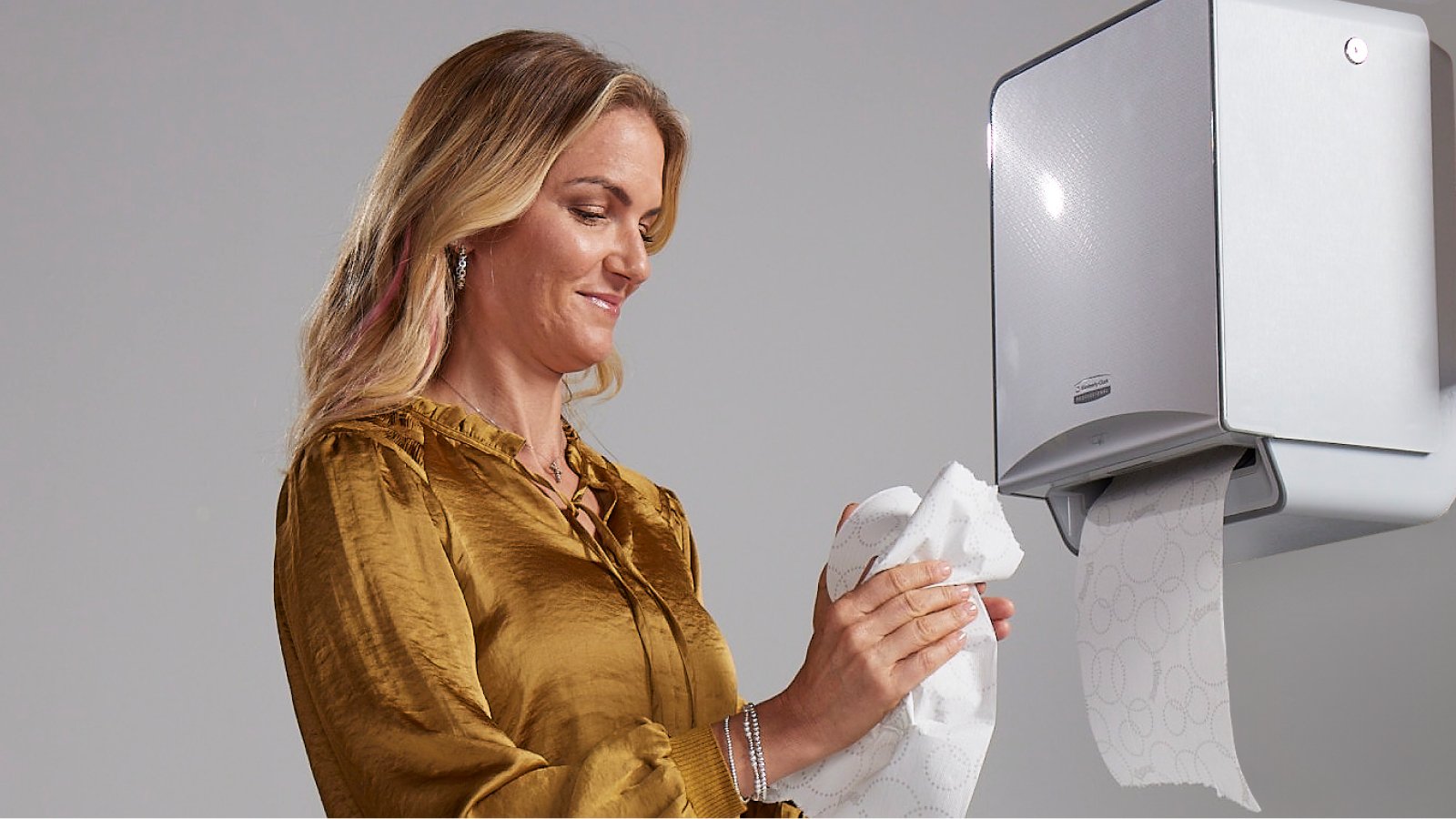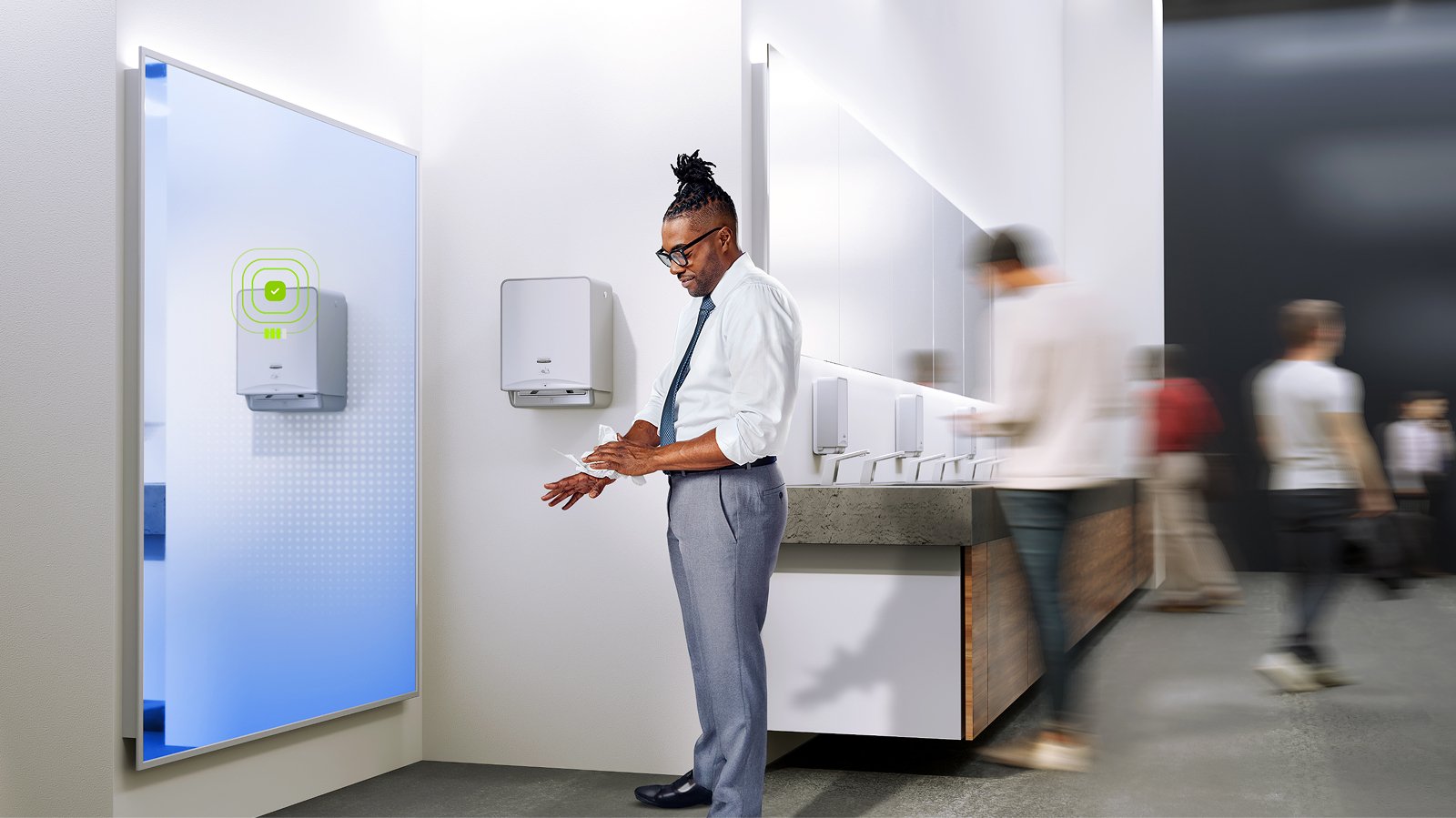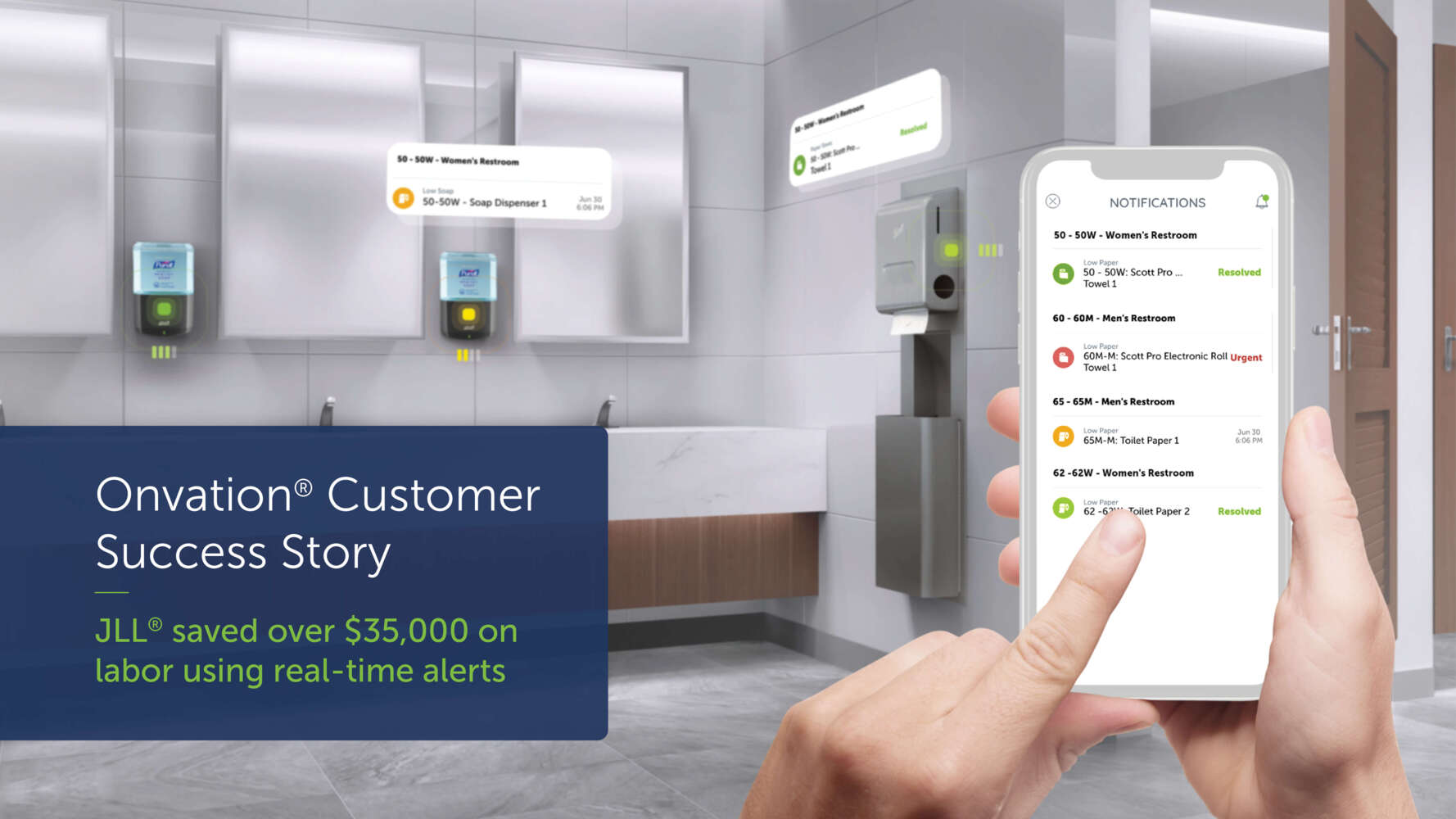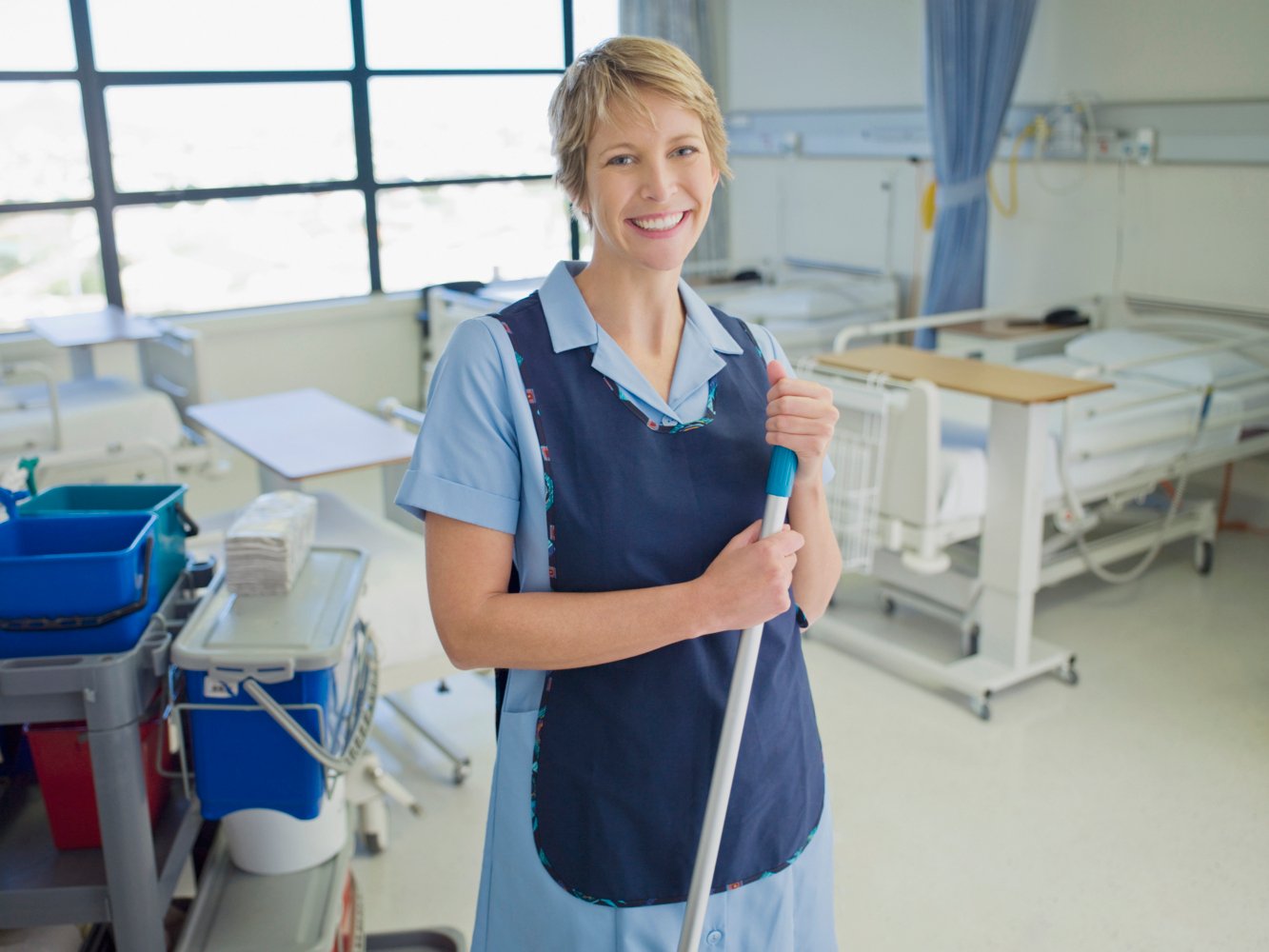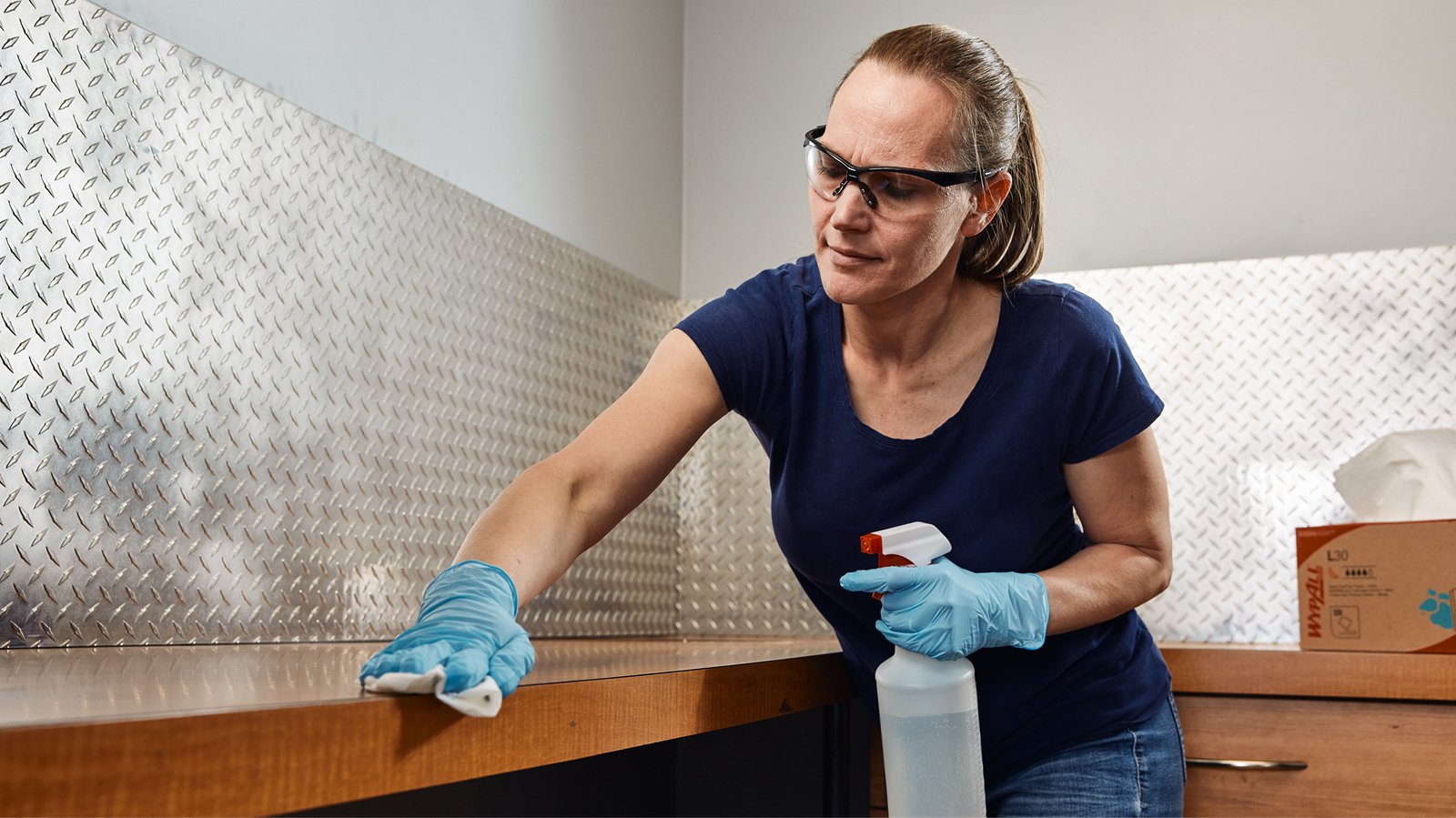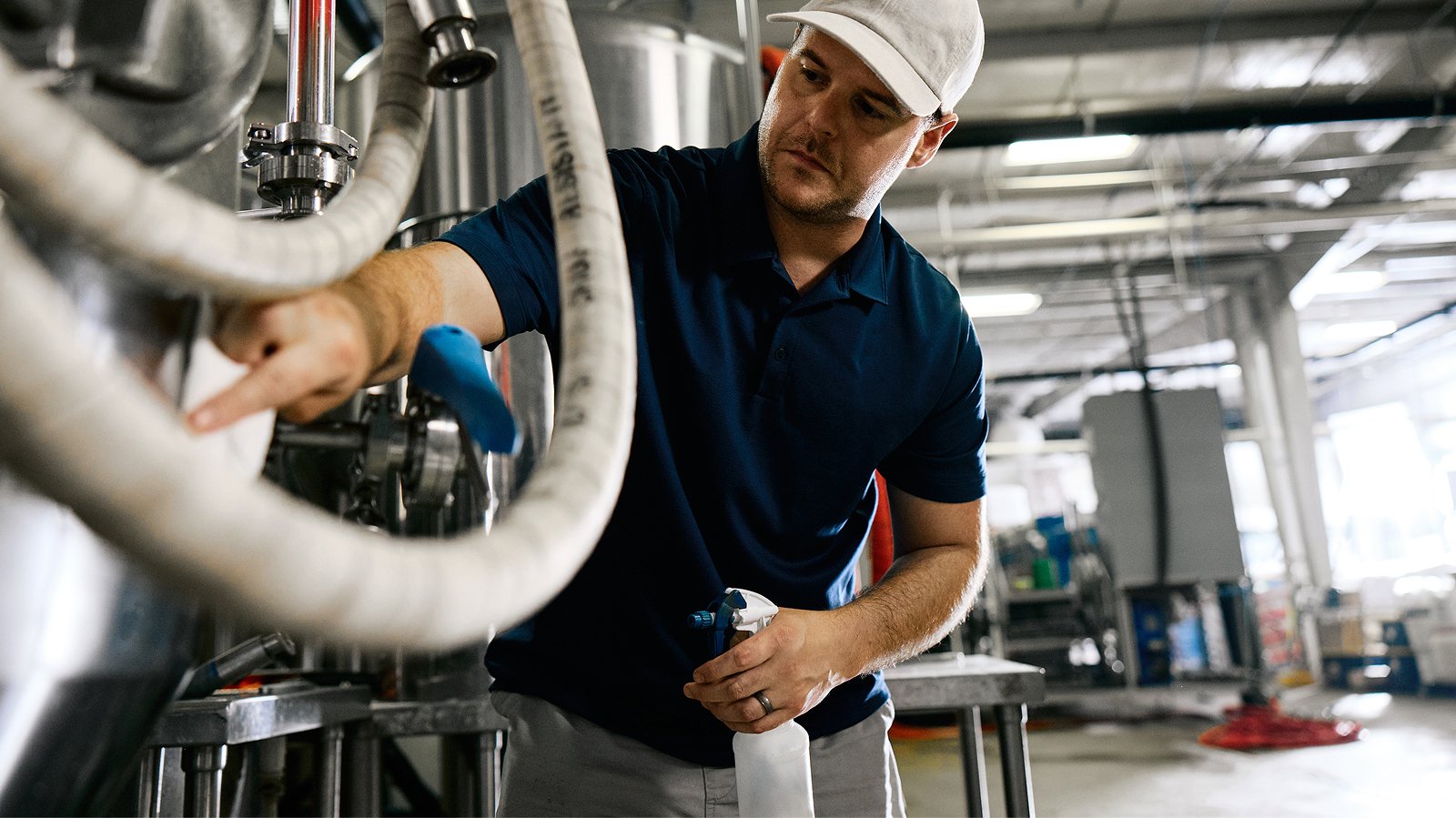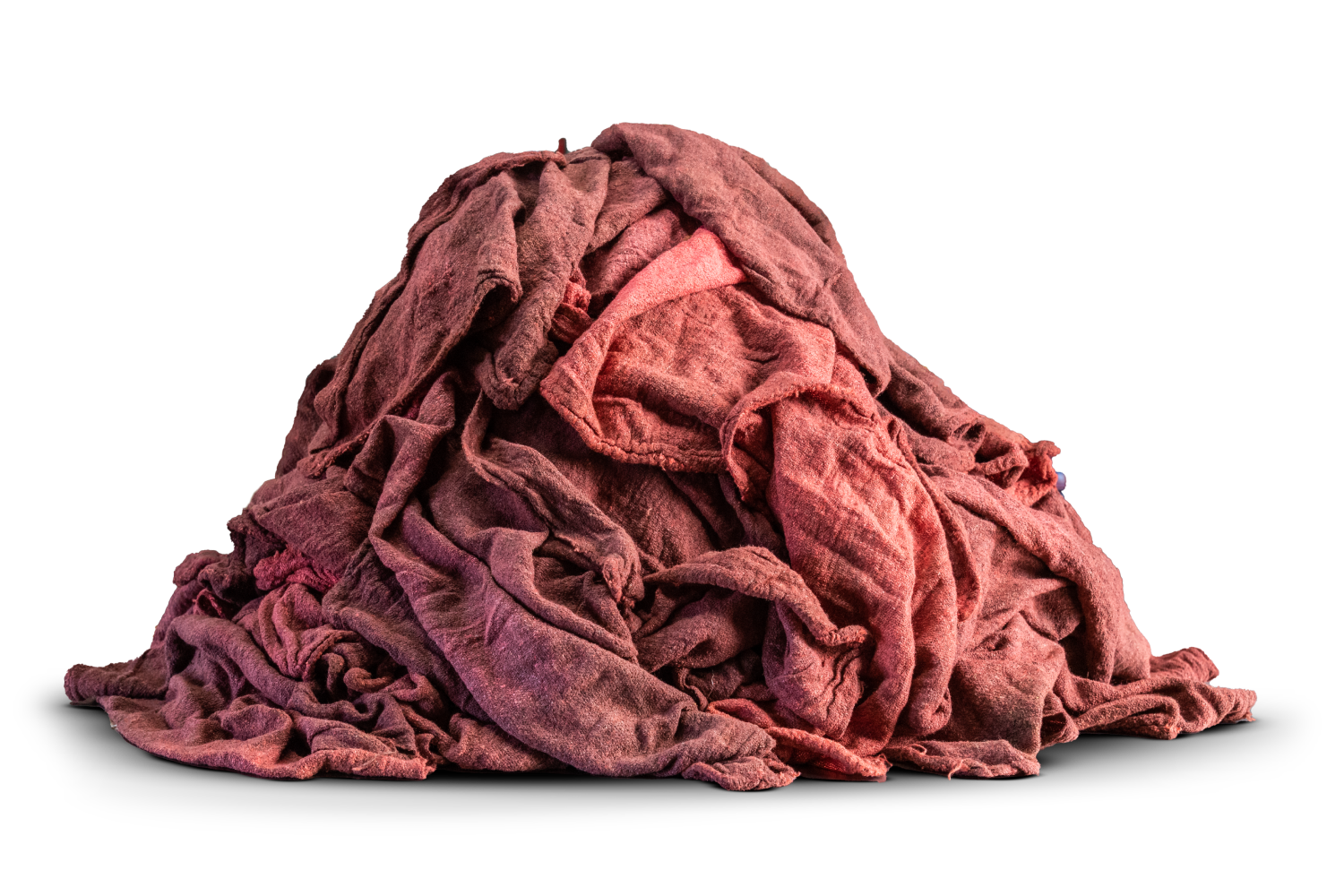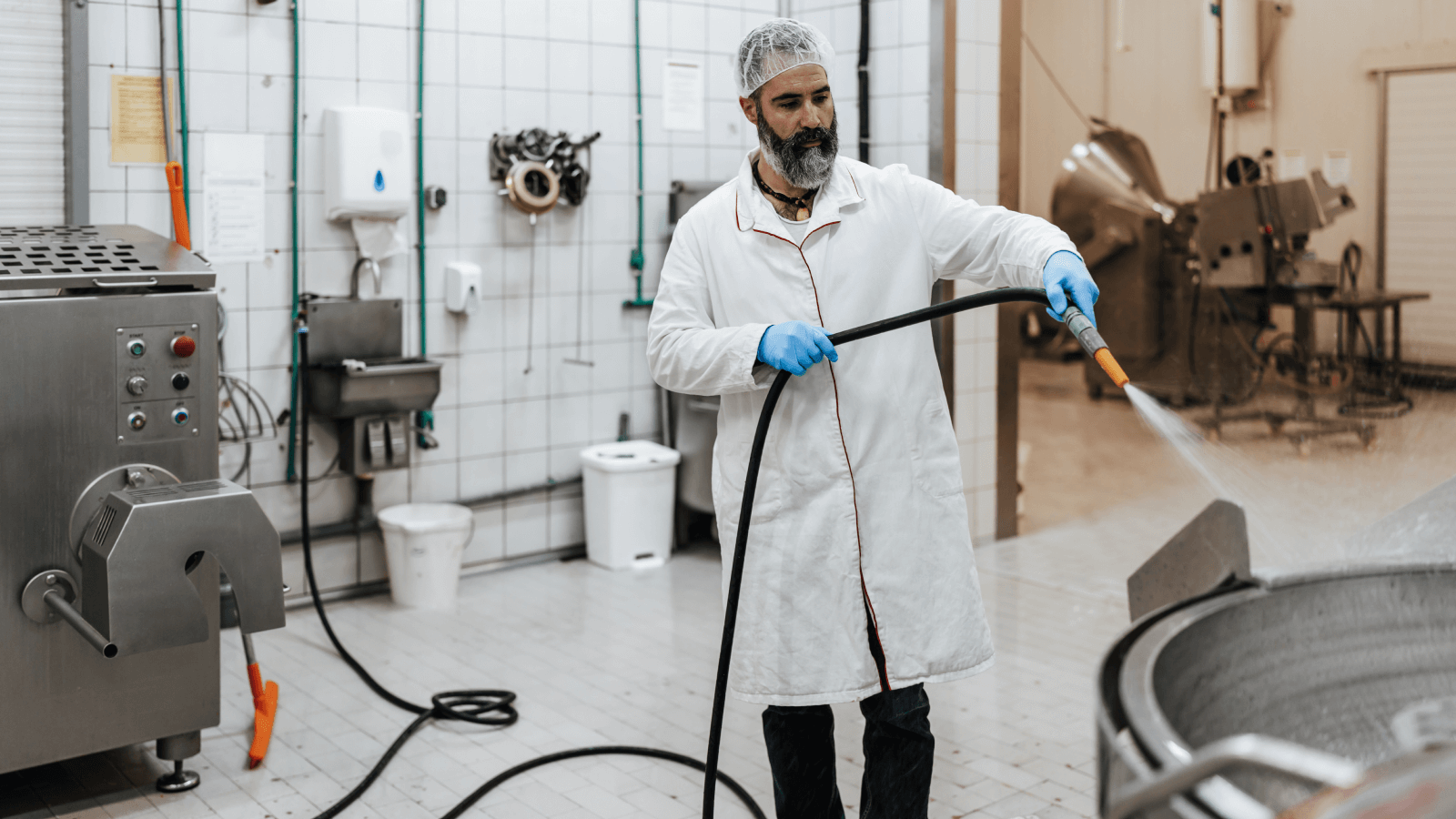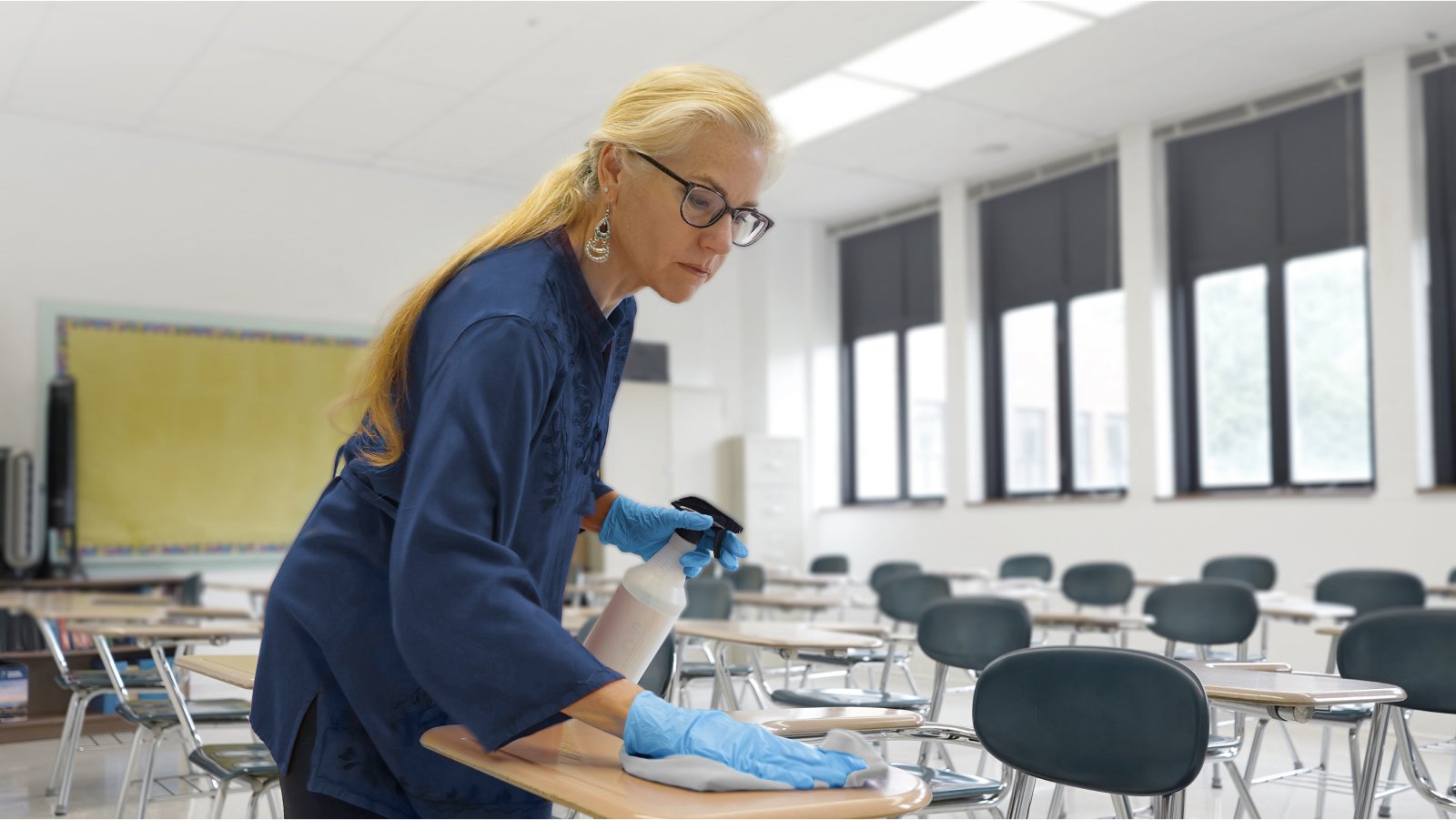Last Updated APRIL 2025
Office Cleaning Checklist: Steps to Enhance Employee Health and Reduce the Spread of Germs
Uncover the surprising germ hotspots lurking in your office and master the art of maintaining a healthier workplace. From keyboard hygiene to restroom cleanliness, ensure your office cultivates productivity and well-being with our comprehensive cleaning guide
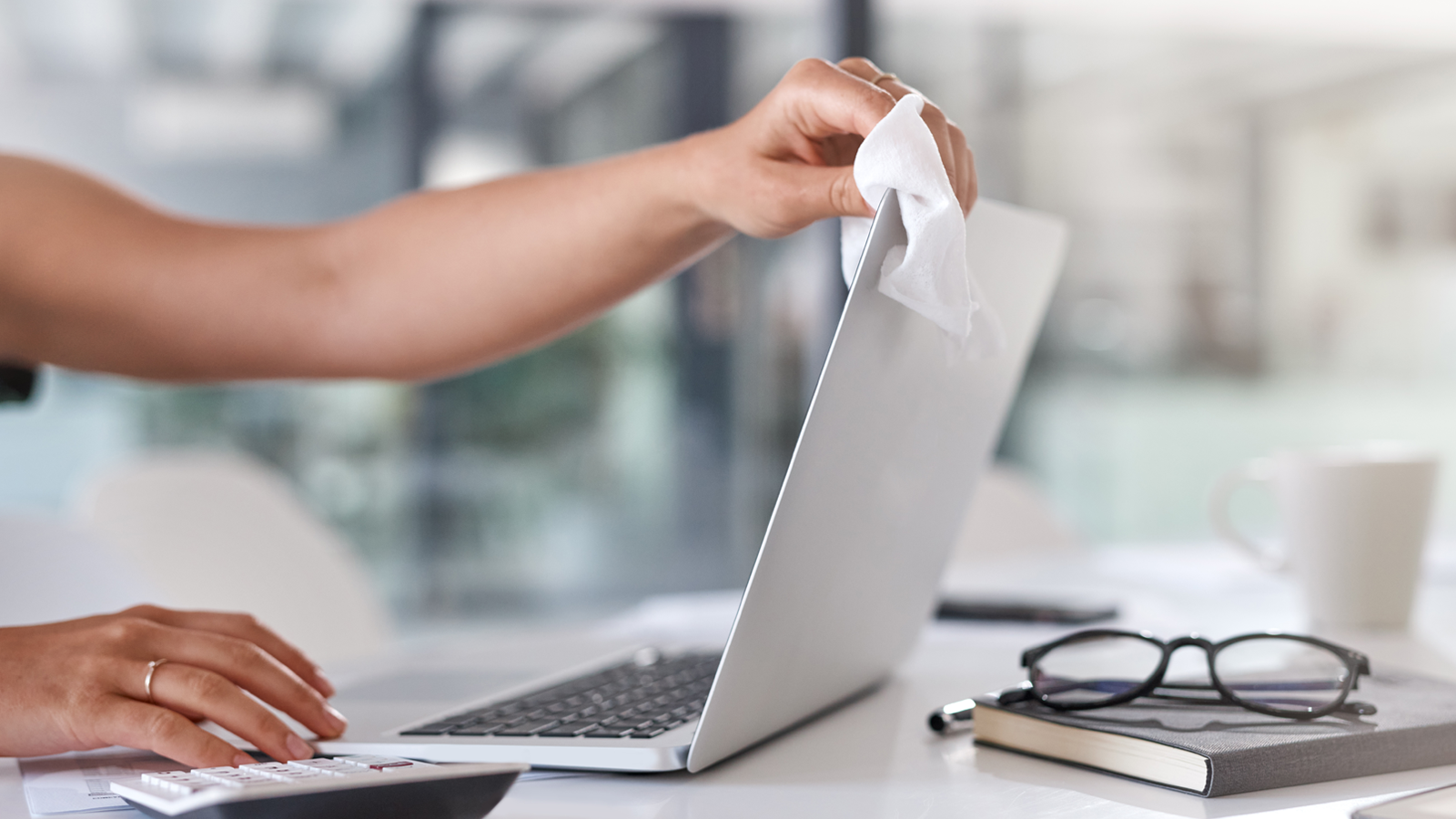
The cleanliness of your office might be more critical than you think. A well-maintained workplace isn't just about appearances; it's about creating an environment where employees can thrive. Surprisingly, some of the most germ-ridden spots in the office are not where you might expect, and addressing these can lead to healthier, more productive teams.
Workplace cleanliness directly impacts employee health and productivity as it helps to reduce the spread of germs and viruses — leading to fewer sick days and a healthier workforce. This can lower healthcare costs and create a more stable work environment.
A tidy, organized workspace also boosts employee morale and engagement. According to a survey by Staples, 94% of workers reported feeling more productive in a clean workspace, while 77% said they produce higher quality work in these environments.1
Let’s explore the five dirtiest places in the office and develop a checklist to ensure your cleaning routines effectively maintain a healthy environment.
According to a survey by Staples, 94% of workers reported feeling more productive in a clean workspace, while 77% said they produce higher quality work in these environments.1
Identifying Germ Hot Spots
Many assume dirt and germs are confined to restrooms, but they also lurk in less obvious places. Kimberly-Clark Professional conducted a study, collecting nearly 5,000 individual swabs from office buildings.2
These findings revealed the five most contaminated areas in the office:
1. Break Room Sink Faucet Handles
2. Microwave Door Handles
3. Computer Keyboards
4. Refrigerator Door Handles
5. Water Fountain Buttons
This highlights the need for a comprehensive cleaning strategy to maintain a healthy office environment.
Defining the Process
To effectively manage hygiene, it's crucial to differentiate between cleaning, sanitizing and disinfecting. Understanding these differences aids in selecting the appropriate cleaning products to maintain effective hygiene standards.
For example, WypAll® GeneralClean™ L10 Light Cleaning Towels are suitable for various light-duty cleaning tasks and reliably replace paper towels for spray-and-wipe jobs – including glass surface cleaning and absorbing small spills.
Cleaning: Involves the physical removal of germs, dirt and impurities from surfaces or objects using soap (or detergent) and water. While cleaning doesn’t necessarily kill germs, it significantly reduces their numbers and the risk of spreading infection.
Sanitizing: Aims to reduce the number of germs to a safe level, as per public health standards. This process typically involves either cleaning or disinfecting surfaces to minimize germ transmission.
Sanitizing: Aims to reduce the number of germs to a safe level, as per public health standards. This process typically involves either cleaning or disinfecting surfaces to minimize germ transmission.
Office Cleaning Action Plan
Exterior:
Creating a clean office starts from the moment employees and visitors step onto the premises. Here's a
checklist to
help maintain a spotless entrance:
- Cleaning the Entrance Mats: Provide entrance mats to catch loose dirt and reduce wet floors. Be sure to spot-clean as needed and replace regularly in rainy weather.
- Clean Loose Debris: Remove leaves, dirt, rocks and other debris to prevent fall hazards.
- Remove Standing Water: Ensure the main walkways are free of puddles or standing water.
- Empty Trash Cans and Ashtrays: Prevent overflow and maintain a tidy appearance.
- High-Touch Surfaces: Disinfect doorknobs and handles regularly.
Common Areas/Lobby:
High-traffic areas like common rooms and lobbies require diligent cleaning to maintain a welcoming and
healthier environment for employees and visitors. Here's how to ensure these spaces remain clean:
- High-Touch Surfaces: Disinfect commonly touched items such as doorknobs, handles, elevator buttons, office equipment and shared phones. Allow surfaces to air dry as per product directions. For some products, drying is an important step and can impact the effectiveness of the disinfectant.
- Floor Maintenance: Regularly clean carpets or tiles to prevent illness-causing germs, viruses or dust mites that can be tracked on our shoes. Studies have found over 420,000 different types of bacteria living on the average shoe.3
- Trash Disposal: Empty trash bins daily, even if they're not full, to prevent the buildup of odors and pests.
- Furniture: Dust and damp clean lobby or common room furniture. This also helps to extend the life of your upholstery.
- Hand Hygiene Stations: Consider installing hand sanitizer stations in common areas for convenient access to hygiene resources between handwashing opportunities. If these supplies are available, it helps to keep hygiene top of mind for employees.
Desk/Cubical:
Desks and cubicles often become a hotspot for germs, especially when employees eat at their desks. Here's
how to keep these areas more hygienic:
A study by the University of Arizona found that the average office desk harbors 400 times more bacteria than a toilet seat.5
- Keyboard and Mouse: Regularly clean keyboards, mouse and mouse pad. Use Dust-Off or a vacuum for the keyboard and sanitize with wipes to kill additional bacteria.
- Shared Telephone: Regularly disinfect shared phones as some studies have shown that flu viruses can survive on hard surfaces for 24 to 48 hours.4
- Desk Maintenance: Disinfect desks and chairs daily as these frequently touched surfaces are breeding grounds for bacteria and viruses. A study by the University of Arizona found that the average office desk harbors 400 times more bacteria than a toilet seat.5
- Hygiene Supplies: Ensure that hand sanitizer, tissues and cleaning wipes are readily available so employees can proactively clean their desks. Also, consider putting up signage with useful cleaning tips.
- Trash Disposal: Empty trash bins daily, even if not full, to prevent the buildup of odors and pests.
- Floor Maintenance: Regularly clean carpets or tiles to prevent illness-causing germs, viruses or dust mites that are tracked in on our shoes.
- Eating at Desks: Remind employees to clean their desks before and after eating to prevent the spread of foodborne germs and to maintain a tidy workspace.
Kitchen/Break Room/Cafeteria:
Shared food areas in the workplace can quickly become unhygienic if not properly maintained. Here’s how to
keep these spaces clean:
- Food Area Sanitization: Clean and disinfect food preparation areas, such as countertops, sinks and appliances, to prevent cross-contamination and foodborne illnesses.
- Table and Seating Area Cleaning: Clean and disinfect tables, chairs and other seating surfaces in the cafeteria, breakroom or kitchen to remove food debris.
- Appliance Maintenance: Regularly clean and sanitize appliances, including ovens, stoves, refrigerators and microwaves, to prevent the buildup of food residue and bacteria. This is essential for coffee makers and water coolers.
- Trash Management: Empty trash bins and replace liners daily to prevent the accumulation of odors and pests.
- Supply Restocking: Ensure that hand sanitizer, tissues and cleaning wipes are readily available to help promote hygiene practices and encourage employee participation in the cleaning efforts.
- Food Storage: Remind employees to label and date their food and clean the refrigerator weekly to prevent spoiled food.
Restrooms:
Maintaining hygienic restrooms is essential for the health and comfort of everyone. Here's how to ensure
your restrooms are always in top condition:
- Toilets: Clean and disinfect the toilet bowl. A monthly application of a disinfectant germicidal cleaner prevents stains and encrustation, eliminating odors and maintaining a hygienic environment.
- Sinks and Faucets: Clean and sanitize sinks, faucets and other fixtures to curb the spread of infections. These areas can harbor higher concentrations of germs, often more than toilets.
- Surfaces: Wipe and clean all reachable surfaces, including stall walls, doors and doorknobs.
- Floors: Mop floors with a disinfectant solution for more effective germ removal.
- Supplies and Maintenance: Regularly refill all dispensers and empty trash bins so employees can access essential hygiene resources when needed.
- Signage: Place signs reminding employees to wash their hands thoroughly, promoting good hygiene practices.
Creating a Healthy and Productive Workplace
Maintaining a clean and hygienic office is essential for the health and productivity of employees. Addressing these often-overlooked areas and implementing a thorough cleaning routine can significantly reduce the risk of illness and create a more pleasant workspace.
As we navigate through cold and flu season and beyond, prioritizing cleanliness and hygiene is more important than ever. By promoting hygiene awareness and adopting best practices, you can contribute to a happier and more resilient workplace.
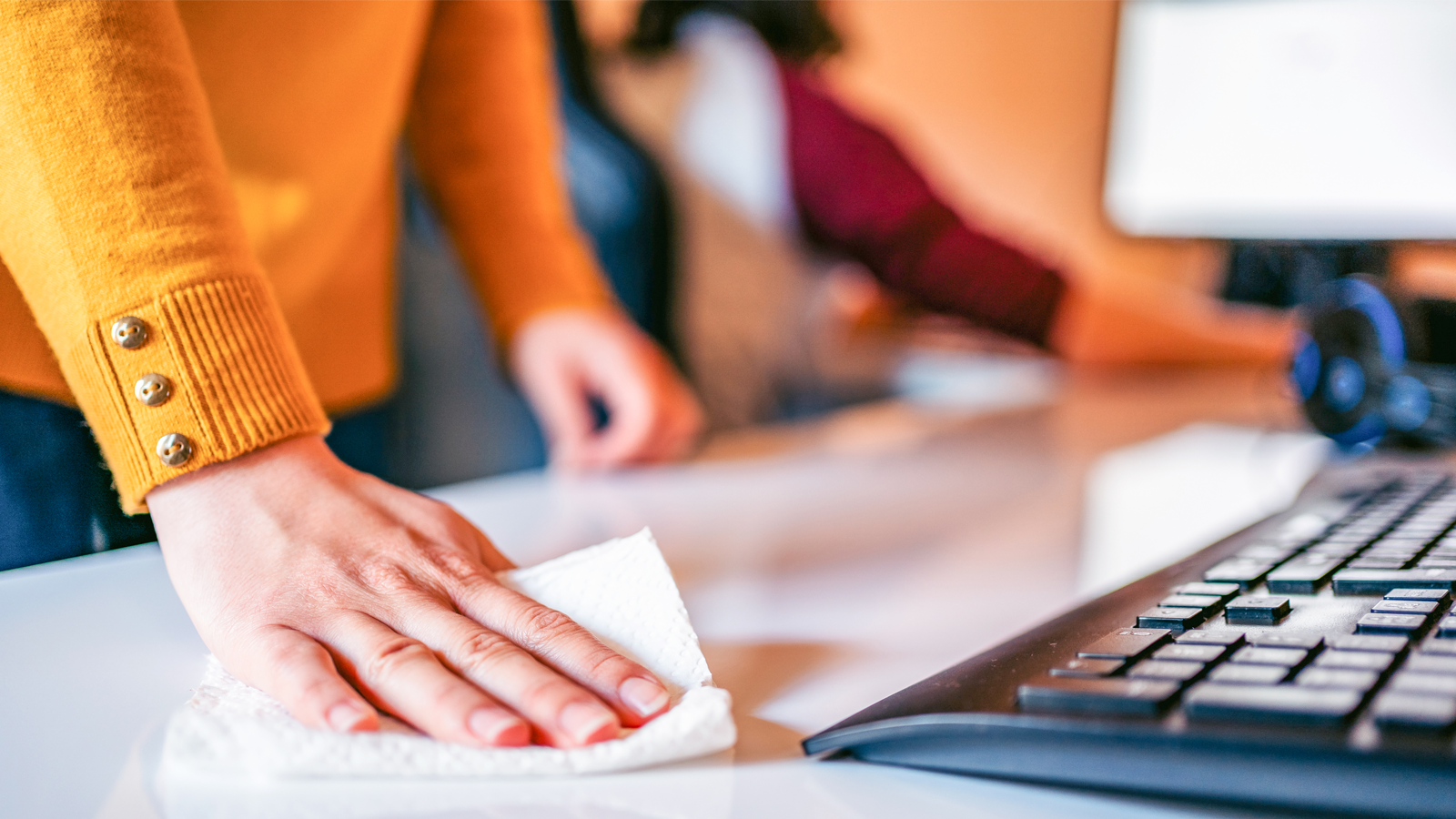
Office Cleaning Checklist
Use this checklist to create a more hygienic workplace and help maintain employee health. Save it as a handy resource come cold and flu season.
2 Study conducted in 2012 for the Healthy Workplace Project, Kimberly-Clark Professional data.
3 Rogers, A. (2023, March 8). 4 Musts for a clean classroom: see checklist. Enviro-Master Services. https://enviro master.com/commercial-cleaning-information/schools-and-daycare/#:~:text=More%20than%20420%2C000%20different%20types,mites%2C%20germs%2C%20and%20viruses
4 Kennedy, M., & Kennedy, M. (2022, May 26). How long do flu germs live on hard surfaces, fabric, and skin. Business Insider. https://www.businessinsider.com/guides/health/how-long-do-flu-germs-live
5 Average office desk has 400 times more bacteria than toilet seat. (2020, September 23). NZ Herald. https://www.nzherald.co.nz/business/average-office-desk-has-400-times-more-bacteria-than-toilet-seat/ | M2XFGS5EYNED5TUCCZDWDHVS7M/










